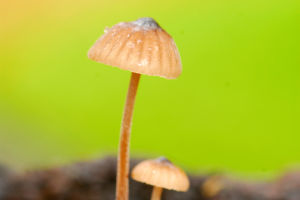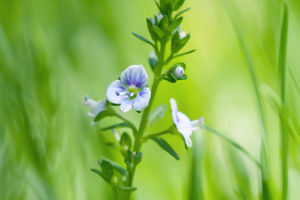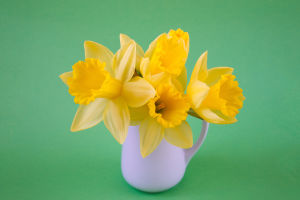Hey Lykkers! Flowers have long captivated the human imagination with their vibrant colors, delicate petals, and enchanting fragrances.
These botanical beauties are more than just decorative; they play a vital role in the ecosystem, have rich cultural significance, and bring joy to our everyday lives.
From the classic rose to the exotic orchid, the world of flowers is diverse and fascinating. Let’s dive into the enchanting universe of flowers and explore what makes them so special.
Why Are Flowers Important?
1. Ecological Role
Flowers are essential for the survival of many species, including humans. They are the reproductive structures of flowering plants, facilitating pollination and the production of seeds. Flowers attract pollinators such as bees, butterflies, birds, and even bats, ensuring the spread of pollen from one plant to another. This process is crucial for the production of fruits and seeds, which in turn provide food and habitat for various organisms.
2. Aesthetic and Emotional Impact
Flowers have an undeniable aesthetic appeal. Their wide range of colors, shapes, and sizes adds beauty to gardens, homes, and landscapes. Beyond their visual allure, flowers can evoke emotions, symbolize feelings, and convey messages. From expressing love with a red rose to celebrating life with a bouquet of lilies, flowers are often used in rituals, ceremonies, and celebrations worldwide.
3. Cultural Significance
Flowers hold deep cultural significance in many societies. They are often associated with myths, legends, and folklore. For example, the lotus flower is revered in many Asian cultures as a symbol of purity and enlightenment, while the cherry blossom in Japan represents the fleeting nature of life. Flowers also play a prominent role in art, literature, and fashion, inspiring creativity and expression.
Popular Types of Flowers and Their Meanings
1. Roses
Roses are perhaps the most famous flowers, known for their beauty and fragrance. They come in a variety of colors, each with its own meaning. Red roses symbolize love and passion, while white roses represent purity and innocence. Pink roses convey admiration, and yellow roses signify friendship and joy.
2. Tulips
Tulips are beloved for their vibrant colors and simple elegance. They are a popular choice in spring gardens and bouquets. Tulips are often associated with love, grace, and elegance. Different colors have different meanings: red tulips express deep love, while purple tulips symbolize royalty. Yellow tulips once symbolized unrequited love but are now associated with happiness and cheerfulness.
3. Orchids
Orchids are exotic and unique, known for their intricate patterns and diverse shapes. They symbolize beauty, strength, and luxury. Orchids are also associated with fertility and elegance, making them popular in weddings and other celebratory events. With thousands of species and hybrids, orchids come in a wide array of colors, each carrying its own symbolism.
4. Lilies
Lilies are known for their large, showy blooms and strong fragrance. They are often associated with purity, renewal, and transformation. White lilies, in particular, are symbols of purity and virtue, making them popular choices for weddings and ceremonies. Pink lilies represent prosperity and wealth, while orange lilies symbolize passion.
Time-Lapse: Watch Flowers Bloom Before Your Eyes | Short Film Showcase
Video By National Geographic
5. Sunflowers
Sunflowers are cheerful and bright, known for their large, sunny faces that follow the sun throughout the day. They symbolize adoration, loyalty, and longevity. They are often associated with positivity and joy, making them a popular choice for gifts and garden decorations.
How to Care for Your Flowers
1. Watering
Proper watering is crucial for keeping your flowers fresh and healthy. Most flowers prefer well-drained soil that is consistently moist but not waterlogged. Overwatering can lead to root rot, while underwatering can cause wilting. Pay attention to the specific water needs of each flower type, as some may require more or less frequent watering.
2. Sunlight
Flowers need sunlight to thrive, but the amount of light required varies by species. Some flowers, like sunflowers, thrive in full sun, while others, like ferns, prefer partial shade. Ensure that your flowers are placed in an environment that suits their light requirements to promote healthy growth.
3. Soil and Fertilizer
The right soil is essential for flower growth. Most flowers thrive in well-drained, nutrient-rich soil. Regularly adding compost or organic fertilizer can help improve soil quality and provide essential nutrients. Be mindful of the specific soil pH and nutrient needs of your flowers, as some may require special conditions.
4. Pruning
Pruning is essential for maintaining the shape and health of your flowers. Regularly remove dead or dying blooms to encourage new growth and prevent disease. Pruning can also help improve air circulation around the plant, reducing the risk of fungal infections.
Flowers are more than just pretty faces in nature; they are symbols of beauty, culture, and life itself. Their vibrant colors, enchanting fragrances, and delicate structures have fascinated people for centuries, inspiring art, poetry, and celebrations.So, the next time you see a flower, take a moment to appreciate its unique beauty and the vital role it plays in our world.


